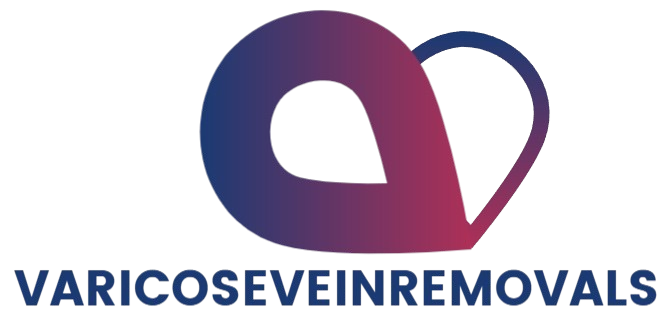While conditions like varicose veins and spider veins are often considered just a cosmetic concern, they can signal deeper health issues that, if left untreated, could affect your heart and overall well-being. Vein health is more than just skin-deep — it’s critical to maintaining good cardiovascular health and preventing future complications.
At the Albert Vein Institute, we specialize in diagnosing and treating various vein conditions, and our team of experts wants to emphasize the importance of taking care of your veins. This guide explores common vein conditions, their potential risks, and practical ways to keep your veins in top condition for overall health.
Common Vein Conditions: What You Need to Know
Vein disease encompasses a wide range of conditions, many of which can be inherited. Understanding these conditions is key to mitigating their effects and preventing more serious complications.
1. Venous Ulcers
Venous ulcers are chronic sores that occur when blood flow is impaired due to damaged valves in the veins. This condition usually stems from untreated or advanced varicose veins, and it typically affects the lower legs. Over time, as blood fails to circulate properly, pressure builds up in the veins, causing skin damage and open wounds.
These ulcers are often preceded by varicose veins and spider veins, making early intervention crucial to prevent further complications. Left untreated, venous ulcers can cause long-term pain and difficulty with mobility.
2. Varicose and Spider Veins
Varicose veins are swollen, raised veins that often appear dark purple or blue, while spider veins are smaller, web-like veins that may look red or blue. Both of these conditions are caused by weak or damaged valves in the veins that prevent proper blood flow.
Varicose veins, in particular, can lead to symptoms such as aching, tiredness, and heaviness in the legs. While often viewed as a cosmetic concern, varicose veins can result in more serious complications, including swelling, blood clots, and even venous ulcers if left untreated.
Spider veins, which are more common in women due to hormonal changes, can develop on the face, thighs, or calves. Pregnancy, obesity, and a family history of vein disease also increase the likelihood of developing both spider veins and varicose veins.
3. Phlebitis
Phlebitis refers to inflammation of the veins and can be superficial or deep. Superficial phlebitis occurs in veins near the surface of the skin and is often caused by irritation from a blood clot or medical procedures like catheter insertion. Although superficial phlebitis is typically a minor issue, deep vein thrombophlebitis (DVT) is a much more serious condition that occurs when a blood clot forms in a deeper vein.
4. Deep Vein Thrombosis (DVT)
DVT is one of the most dangerous vein conditions, as it involves the formation of a blood clot in a deep vein, usually in the legs. If untreated, these clots can break loose and travel to the lungs, causing a pulmonary embolism, which is potentially life-threatening.
Symptoms of DVT include swelling, pain, and warmth in the affected leg, and in some cases, the skin may turn pale or bluish. Those at higher risk for DVT include individuals with a history of blood clots, recent surgery, or prolonged immobility.
How Taking Care of Your Veins Improves Your Overall Health
Vein health is closely linked to cardiovascular health. When your veins aren’t functioning properly, the heart is forced to work harder to circulate blood, increasing the risk of developing more serious heart conditions over time. By maintaining good vein health, you not only prevent discomfort and cosmetic issues but also support the function of your heart and circulatory system. Here’s how you can improve and maintain healthy veins:
1. Make Dietary Changes
What you eat plays a major role in how well your veins function. Eating a diet high in sodium can increase fluid retention and pressure on your veins, while a diet rich in fiber, vitamins, and minerals can improve blood circulation and support vein health.
Key dietary recommendations include:
- Reduce sodium to help prevent swelling and fluid retention.
- Increase fiber intake to promote healthy blood flow and reduce the risk of vein disease.
- Eat foods rich in vitamins and minerals, especially those that support cardiovascular health, such as vitamin C (which helps maintain healthy blood vessels) and vitamin E (which can help prevent clotting).
2. Exercise Regularly
Physical activity is one of the best ways to support vein health. Regular exercise promotes circulation, strengthens the muscles surrounding your veins, and reduces the risk of blood pooling in the legs. Low-impact exercises like walking, swimming, cycling, or even gentle stretching can improve circulation without putting undue strain on your veins.
For those with more serious vein conditions, regular movement helps reduce symptoms like swelling and discomfort. Aim for at least 30 minutes of moderate exercise most days of the week to maintain healthy circulation.
3. Avoid Prolonged Sitting or Standing
Staying in one position for too long can exacerbate vein issues by increasing pressure in the lower extremities and encouraging blood to pool in the legs. If your work requires you to sit or stand for extended periods, make it a habit to take breaks and move around. Even simple activities like standing up to stretch or walking around for a few minutes can make a significant difference.
4. See a Vein Specialist
If you already have vein disease or are at risk, it’s important to see a specialist who can help manage your condition. Vein specialists like those at Albert Vein Institute use state-of-the-art techniques to diagnose and treat conditions like varicose veins, DVT, and venous ulcers. Early intervention can prevent complications and help maintain your vein health long-term.
Conclusion
Taking care of your veins isn’t just about avoiding varicose veins or spider veins — it’s about supporting your overall health, particularly your heart and circulatory system. Vein conditions, if left untreated, can lead to more serious health issues, including blood clots, ulcers, and chronic pain. By making smart lifestyle changes, including eating a healthy diet, staying active, and seeking professional treatment when needed, you can maintain healthy veins and improve your quality of life.
If you’re experiencing any symptoms of vein disease or are looking to learn more about how to protect your vein health, don’t hesitate to reach out to a vein specialist. Taking care of your veins today can prevent major health issues in the future, keeping you healthier and more active for years to come.



